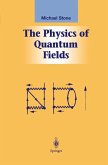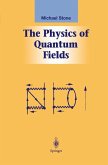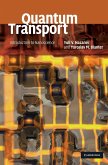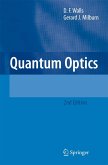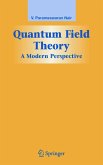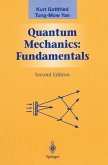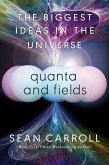The combination of quantum mechanics and quantum ?eld theory cons- tutesthemostrevolutionaryandin?uentialphysicaltheoryofthetwentieth century. Itsimpactisfeltnotonlyinalmostallothersciences,butthefruits of its application are ubiquitous in everyday life. This textbook is designed to teach graduate students the underlying quantum-physical ideas, their mathematical formulations, and the basic problem-solving techniques of the discipline. It assumes they have taken at least one introductory course in quantum mechanics as undergraduates and are familiar with the history of the subject and the basic experimental evidence that led to its adoption, as well as with many of its fundamental notions. In contrast to most other authors, I am therefore not introducing the quantum theory via an hist- ical survey of its early successes. Instead, following the models of books on classsical mechanics or electromagnetism, I develop the theory from its basic assumptions, beginning with statics, followed by the dynamics and details of its speci?c areas of use as well as the needed mathematical te- niques. Although this book, inevitably, deals largely with the behavior of point particles under various conditions, I do not regard particles as the fun- mental entities of the universe: the most basic object is the quantum ?eld, with theobserved particlesarising from the?eld asitsquanta. For thisr- son I introduce quantum ?elds right from the beginning and demonstrate, in the ?rst chapter, how particles originate.
Hinweis: Dieser Artikel kann nur an eine deutsche Lieferadresse ausgeliefert werden.
Hinweis: Dieser Artikel kann nur an eine deutsche Lieferadresse ausgeliefert werden.
From the reviews: "I find Newton's text comprehensive but terse... Within only 400 pages, it covers topics from such basics as the harmonic oscillator to the Dirac equation. One finds all the major areas of a standard first-year graduate curriculum... The treatments are logical and accurate, but explanations are minimal... "The book has its high points. A section on interaction of radiation with matter is exceptionally good because the groundwork for quantization of the electromagnetic field was laid earlier. That allows for an elegant treatment of spontaneous emission. Several good exercises end each chapter, and concise, well-written appendices end the book... "I would recommend Newton's book more as a reference than as a general text..." PHYSICS TODAY "There are many texts on quantum mechanics and one may ask if we need another. ... this book ... tackles the subject in a slightly different way. ... The great advantage ... is that the author has been able to tackle a wider range of topics. Realistic examples, even those familiar introductory examples, are done more carefully and precisely than is normal. ... I would strongly recommend lecturers and students of second or advanced quantum mechanics courses to take a look at this book." (T. Evans, Contemporary Physics, Vol. 45 (3), 2004) "Roger Newton has had a distinguished career in physics, with several significant contributions to scattering theory and high-energy physics. ... His new book, Quantum Physics: A text for Graduate Students, faces stiff competition in an area already crowded with excellent texts. ... I find Newton's text comprehensive ... . Several good exercises end each chapter, and concise, well-written appendices end the book. ... I would recommend Newton's book ... ." (N. G. Deshpande, Physics Today, August, 2003) "Even with the extensive amount of books and monographs on quantum mechanics, the present text has a special place. It is original and presents typical material that quite often appears in the first quantum mechanical course ... in totally different 'light'. ... this volume should not miss in any serious library having a section on quantum mechanics and quantum field theory." (Kris Heyde, Physicalia, Vol. 25 (4), 2003) "Newton provides a fresh approach to the foundations and interpretation of quantum physics. ... There are problems and exercises throughout the text and at the end of each chapter." (C. M. Savage, The Physicist, Vol. 40 (2), 2003)


